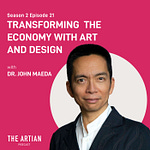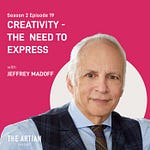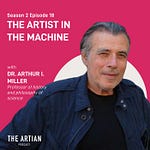There’s something electrifying about the desert—the silence, the vastness, the hidden life that seems to observe you. The heat tests your endurance, while the night sky, scattered with stars, leaves you in awe.
As we step into 2025, it feels like the perfect time to reflect on something powerful—moments that inspire, challenge, and connect us to something greater. Moments that remind us what it means to dream and pursue what truly excites us, so we can hope for the coming year to be just as wonderful.
For me, this moment came while fulfilling a dream I’ve nurtured for over 15 years: visiting the magical land artworks scattered across the United States. At the top of my list was Nancy Holt’s Sun Tunnels, a site-specific installation in the remote Great Basin Desert of Utah. So, when the opportunity to visit Utah arose, I knew I couldn’t miss seeing the Tunnels.
The Sun Tunnels sit on 16 hectares (40 acres) of land that Holt purchased in 1974 specifically for this work. The installation aligns with the sun’s yearly extremes, marking its rise and set on the solstices, around June 21st and December 21st. On those days, the sun appears perfectly centered through the tunnels. The four concrete tunnels are arranged in an open X configuration. Each tunnel measures 5.5 meters long, with an external diameter of 2.8 meters - they are large enough, yet not so large as to overwhelm.
Let’s be honest: if you’re hearing about this for the first time, it might be hard to understand why anyone would drive hours into the middle of nowhere to see four concrete tunnels. In many ways, I wrote this piece for myself—not just to preserve the memory of how powerful the experience was, but to reflect on what it taught me. That said, you’ll quickly see how it links to the power of art and my vision for Business Artistry: the idea that we can draw lessons from the creative process and apply them to leadership. Stay with me.
After months of preparation, I landed in Salt Lake City on a Saturday at noon and went to pick up the car I rented. With winter approaching, I had been keeping a close eye on the weather, unsure if rain or snow might disrupt my plans. Knowing their remote location and the potential for rough conditions, I rented a 4-wheel-drive vehicle to navigate the unpaved desert roads.
I stopped at Walmart to stock up on essentials: food, water, a first-aid kit, and a flashlight—just in case. The Sun Tunnels are incredibly remote, about a 50-minute drive along desolate desert tracks from the nearest town, Montello—a tiny village of just 50 residents. Coming from the dense, bustling center of Madrid, where thousands of people cross your path every day, and you have access to everything you need, I didn’t know what to expect from this area.
I left Salt Lake City on Sunday at 9:00 a.m., knowing the drive would take about three hours. The view along the way was incredible. Dark brown mountains with white snow on their peaks rose next to frozen patches of water. The frozen areas reflected the light and made the landscape look even more beautiful. To one side stretched a vast white desert of salt—no surprise, given the city’s name. Everything felt so open, so wide, so endless. It was the kind of landscape that made you pause, just to take it all in. Driving through it, I was struck again by the sheer vastness of the United States—a vastness that never fails to astonish me.
When I turned off Highway 80 onto Route 233, the cars on the road became fewer and fewer. It felt like I was slipping deeper into a quieter, emptier area of the world. By the time I reached Montello, it was around 11:45 a.m. This was about to be the last sign of real civilization before the tunnels. I stopped to fill up the tank, grab a coffee, and get ready for the final stretch of the journey.
As I drove toward Lucin—a former tiny town now long vanished and the turning point for heading to the tunnels—I left the main road behind and ventured onto unpaved paths that led deeper into the desert. There was little evidence that Lucin had ever existed here—just a solitary sign marking its name. Back in the 70s when Holt created the Sun Tunnels, it had a population of only 10 people, and now it was even more forgotten. The dusty tracks stretched endlessly ahead, giving the feeling of an abandoned place, though occasionally I caught glimpses of lonely outposts where a few individuals seemed to have made their home in the emptiness. My excitement grew with every mile, mixed with a growing sense of wonder.
How had Holt even found this place? In 1973, without Google Earth or any digital tools, finding a site like this must have taken an incredible amount of effort—and vision. She would have had to rely on recommendations, word of mouth, and hours of exploring landscapes firsthand. It amazed me to think of the time and trust it required.
When I got closer and closer to the tunnels, I started to doubt my sanity. Who drives this far just to see four concrete tubes? From a distance, they looked small, almost like abandoned bits of road or water infrastructure—forgotten and insignificant against the endless desert.
When I arrived, it was around 12:45 p.m., with the sun high in the sky. I stopped the car at a distance, deciding to approach on foot. I wanted to feel the moment fully, to take in the beauty and the anticipation as I walked toward them. The first thing that struck me as I stepped out of the car was the silence. It wasn’t just quiet—it was absolute. Nothing stirred. I’m not sure how many people visit the Sun Tunnels each day, but I felt lucky to be completely alone. There was nothing around the artwork, no one at the site. Just me and the desert.
The tunnels are set in a vast, flat valley, almost entirely barren. This land was once the floor of Lake Bonneville, an ancient lake that slowly receded over thousands of years. What little vegetation remains is sparse, low to the ground, and offers no refuge to animals. You don’t even hear birds, and the silence is so complete it feels bizarre, as if time has slowed to a standstill in the desert’s stillness.
Nancy Holt once wrote,
“Time is not just a mental concept or a mathematical abstraction in the desert. The rocks in the distance are ageless; they have been deposited in layers over hundreds of thousands of years. Time takes on a physical presence.”
In this way, Holt’s words reminded me that the stillness I felt wasn’t the absence of time, but its weight—its physicality—etched into the very rocks and landscape around me.
When I finally stopped to catch my breath, overwhelmed by the beauty and silence, I let myself look around—and that’s when I was hit again, this time by the vastness of the space. The horizon stretched endlessly, unbroken by anything except the occasional rise of distant mountains. Above me, the sky felt impossibly open and wide—undisturbed by buildings, airplanes, or anything else. It felt boundless, infinite.
To the west, desert mountains loomed in muted shades of brown. To the north, the land flattened into an endless plain, featureless and quiet. To the east, a cluster of mountains shimmered, their colors shifting subtly, as though painted by the ever-changing light. And in the middle of it all stood the artwork—subtle yet undeniably powerful, perfectly in harmony with the landscape around it.
Nancy Holt’s words came to mind: “The feeling of timelessness is overwhelming.” And in that moment, I understood. The scale of the desert, the stillness, and the way her creation interacted with nature—it all seemed to dissolve time and place. I felt impossibly small, as though I had stepped outside my own reality into something eternal.
Trying to describe this view, even now, feels almost impossible. It was overwhelming, so vast, so much bigger than anything I could put into words. Even as I write this, I find myself wondering: How can I make you, the reader, feel what I felt in that moment?
But Holt doesn’t want you to feel overwhelmed; her work invites you to absorb nature and beauty, not be consumed by it. A recurring theme in her art is the desire to make the vast landscape feel human, to bring it back to a scale where the viewer feels central to the experience.
The tunnels are large, yes—but not so large that they dominate or intimidate. Inside, they feel perfectly sized to make the desert approachable. Every time I stepped into one, the vastness outside transformed into something intimate—a rounded postcard framing the landscape just for me. It became digestible, approachable, human.
“I wanted to bring the vast space of the desert back to human scale,” Holt once explained. “I had no desire to make a megalithic monument. The panoramic view of the landscape is too overwhelming to take in without visual reference points. The view blurs out rather than sharpens. Through the tunnels, parts of the landscape are framed and come into focus.”
A confession: the first thing I wanted to do was take pictures. It was so beautiful, so striking—I felt compelled to capture it. But I had promised myself something different. I’d left my photography equipment in the car to force myself to truly experience the moment, without distractions.
It wasn’t easy. A mix of excitement, concern about being alone in the desert, and sheer wonder made it hard to slow down, to stop and breathe, to fully take it all in. But as the hours passed and the silence of the place settled around me, I found myself relaxing.
Eventually, I gave in. I went back for my camera and took photos and videos, but between those moments, I just stood there—looking at the tunnels, feeling the space, and thinking about Holt. I thought about her vision, her persistence, and the way her art bridges the vast and the human. It was humbling to witness how deeply art can influence and inspire.
What does it take to create something like this? To decide, in the 1970s, almost 50 years ago, to create an artwork in the middle of a remote desert? What does it mean to search for a place that aligns perfectly with your vision, your purpose, and your aspirations? And what does it mean to create something designed to outlast you—a work that will carry your legacy as a pioneer for generations to come?
These questions don’t just apply to art. So often, when I think about leadership, these same ideas emerge. What does it mean to set a vision? To create something deeply human? To build something that endures, long after you’re gone?
There is so much we can learn from artists about leadership, vision, and the human experience. Holt’s Sun Tunnels are a perfect example. Pulling off a project like this wasn’t an easy feat, and next week, I’ll share the lessons we can take from Holt’s work and apply to business so make sure to subscribe.
For now, though, I want to leave you with the experience itself. I’ve tried to share it through words, photos, and videos. But in the end, my greatest hope is that it inspires you to see it for yourself. As Nancy Holt said:
“Words and photographs of the work are memory traces, not art.”
If you ever decide to visit the Sun Tunnels, I’ve put together some recommendations and tips to help you plan your trip. You can check them out here. And if you found this post inspiring, why not share it with others who might enjoy it too?
I’d love to hear from you! Whether it’s your thoughts, suggestions, critiques, or even your own cool stories and ideas, feel free to drop me a note at nir [at] theartian.com or leave a comment below.
Have a wonderful 2025 full of inspiration, wonder, and creativity.
– Nir















Share this post